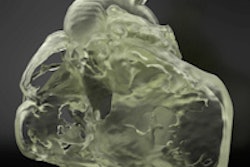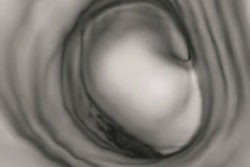The system, which operates without a headset, found several clear differences between the patterns of novice and experienced readers.
"Understanding the visual reading patterns of radiologists for [CT colonography (CTC)] images is critical to the mastery of image reading technique by eye-pointing devices," wrote study author Toshihiro Ogura, PhD, from Gunma Prefectural College of Health Sciences, in an email to AuntMinnie.com. "We investigated the comparison of eye gaze tracking while image reading between expert radiologists and less-experienced radiologists for CTC."
CTC readers typically rely on images of gross pathology, which provide a stretched view of the inner colonic surface. To read them, the researchers used an eye gaze point-sensing system that detects the pupil point and a corneal reflection point by dark pupil eye tracking. The device calculates the eye vector using the central points of corneal curvature and the pupil, and it includes an eye-tracking sensor with two infrared LED laser emitters and two infrared cameras.
For the study, the researchers tracked two expert CTC readers and two less-experienced readers looking at 19 gross pathology images that included polyps, cancers, and other abnormalities.
Eye gaze tracking data can be obtained without using a device placed on the head, such as headgear, with proper training of about 20 minutes, the researchers noted. The device is easy to set up and use, Ogura added.
The average reading time was significantly shorter by almost 50 seconds (p < 0.001) for the expert observers versus the nonexperts.
"Although the reading times of expert radiologists were short, target areas on [virtual gross pathology] images were observed with high detection rates," he said.



















